Five years ago, I was at the Eurobike trade fair, where I saw the stand of a company I didn’t know at the time, which presented a new hub gear: Kindernay.
At that time, the world was still firmly in Rohloff’s hands, Pinion was slowly becoming an alternative for gearbox fans and, from my point of view, there was no real need for another hub gear. But I found the concept of the Norwegians interesting: a hub that can be exchanged and thus taken from bike to bike. Practical!
Kindernay is a Norwegian company whose roots lie in the automotive sector, but which now focuses on high-end hub gears. They develop and manufacture in Europe. By the way: Kindernay is the name of the great-great-grandfather of the managing director Christian and thus also a memory of him.
At this year’s Eurobike, the Norwegians “came back” and offered not only a 14-speed hub, but also a new 7-speed hub. The German bicycle press service gave me the opportunity to take a closer look at the Kindernay XIV and, above all, to ride it. Because back then, 5 years ago, it was not possible to get a test bike with the Kindernay.
The set-up
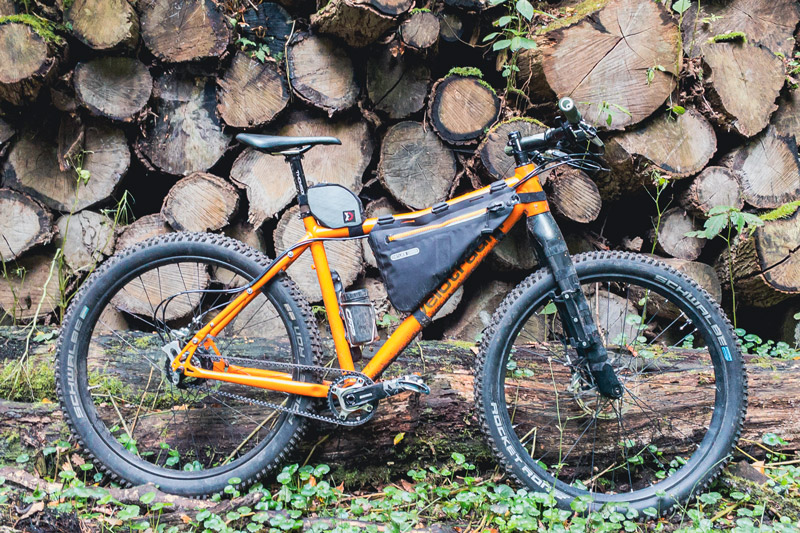
The Kindernay is mounted on a Velotraum Finder. A bike that has been lovingly equipped with everything you need for off-road bikepacking. If you are interested in the Velotraum Finder as a bike and platform, you can find my review here (at that time still with Rohloff).
The Kindernay on the test bike is belt-driven. Of course, it also works with a chain. There are good reasons for both. Personally, I am not convinced of the belt drive in bikepacking and consider it too fragile and not very practical.
Practical test: First riding impression
But it’s all about the Kindernay! And here I have to say: Free this gear from the Test-Finder set-up, because it wants to get out, it wants to be fast and it wants to be able to really unleash its power. At least that was my first and lasting impression. How would this gearstick ride on an all-road bike that is more tuned for performance, like on an MTB that is more focused on speed?

And that brings us to the topic: The Kindernay works quite smoothly and is easy to shift, even under load, with the switches on the right and left of the handlebars. In my first opinion, it is also easier and more direct than the Rohloff.
The whole thing is done hydraulically, which brings us to one of the big differences to the Rohloff. The hub is controlled by hydraulic switches and the cables are routed on the side of the wheel.
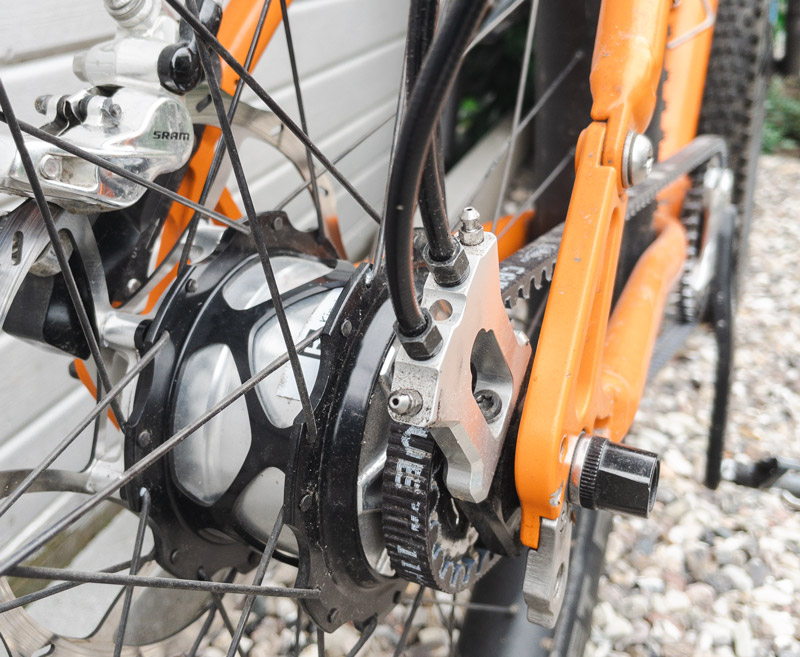
Of course, you might be sceptical as to whether the lines will keep tight. Here I refer to the experiences with hydraulic disc brakes, which have meanwhile also become established on touring bikes. But nostalgics and purists will certainly always prefer the mechanical version.
And before you ask: I have had a Rohloff hub gear on my touring bike since 2017 and have already ridden over 25,000 km with it. And for comparison, I have ridden both the bike with Rohloff and the bike with Kindernay alternately.
However, this does not allow for a serious comparison, because the Rohloff on the touring bike is still operated via a twist grip, while the Kindernay is operated via a handlebar gear lever. And the performance of a hub gear can only be evaluated over a longer period of time.
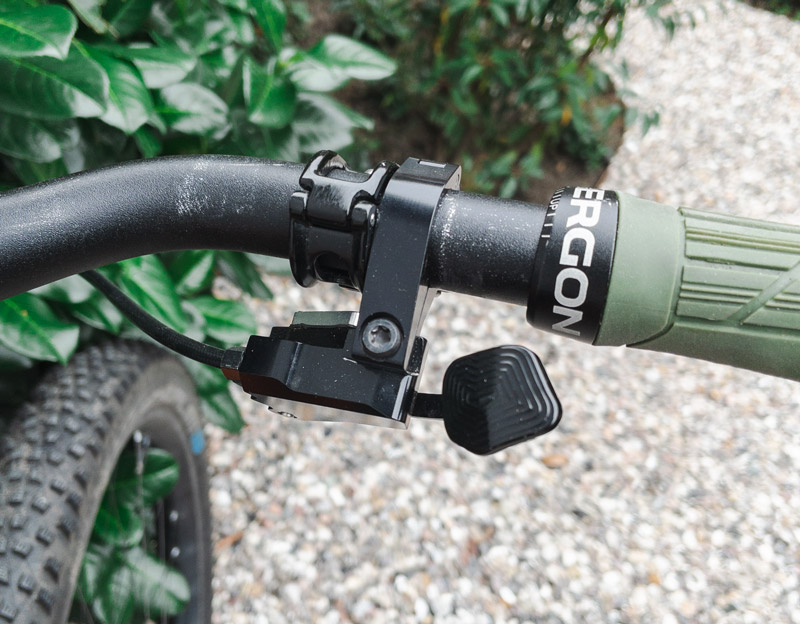
I rode the Kindernay mainly off-road. I was surprised by the smooth shifting and the shifting speed. The Rohloff also shifts quickly, but less smoothly for my taste.
Kindernay in detail (and what makes it “better” than Rohloff)
After the first kilometres in practice, now a look at the details. The Kindernay XIV has 14 gears and offers a gear range of 543% (Rohloff 526%) and with even gear steps of 13.9% (Rohloff 13.6%). Its deployment – depending on the size of the chainring – thus covers all the requirements of a tour. At the rear, either a 16t sprocket (for chain) or a Gates sprocket works, for which the Kindernay is compatible. And probably more interesting for eBikers: the Kindernay has a torque of 160 Nm, which it claims is the highest on the market. So it can handle powerful motors well.

On the test bike, the Kindernay is combined with a 30 chainring. Of course, this provides a lot of room for climbing in off-road terrain. In the lowest gear, the Kindernay allows a deployment of 1.27m. That is already very easy. In comparison, the Rohloff offers a deployment of 1.22m, which in this combination means that the torque is very high. So you can pedal yourself out of there.
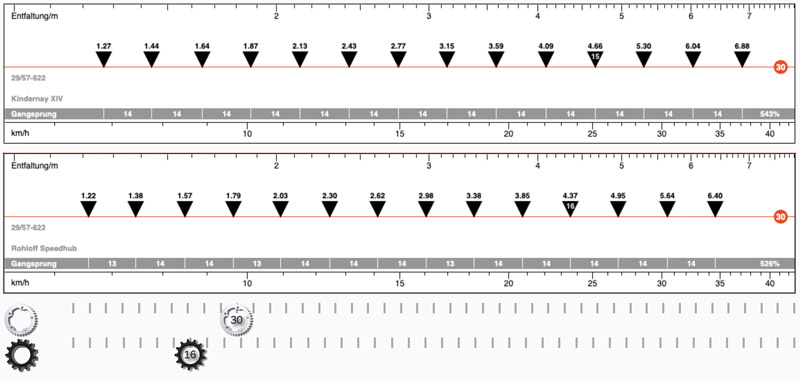
For a better comparison, I chose a 36 chainring in the sprocket calculator. With 8.25m, the Kindernay has a little more range in the upper gears (Rohloff 7.68m). On the test bike with the 30 chainring, I often had the feeling that the top gear might be even more powerful, and on a bikepacking bike like this, I would probably ride the Kindernay with a 32 or 34 chainring.
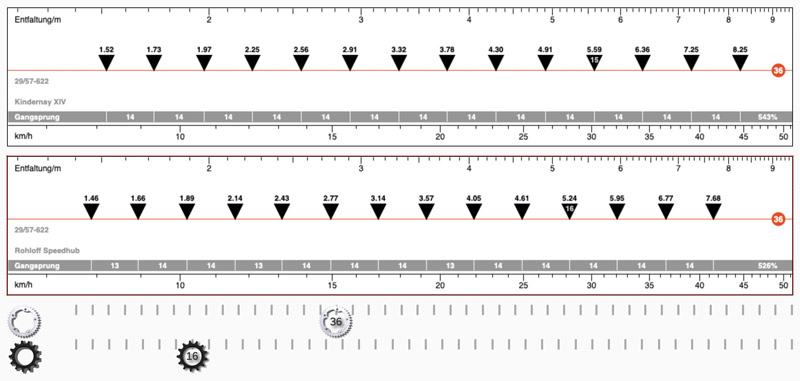
On my Norwid touring bike, the Rohloff is still fixed with a quick release. Of course, that’s a bit antiquated nowadays and Kindernay is more sensible to go straight to thru axles. And unlike Rohloff, they do it right, which means that they actually use a “real” through axle and not an adapter (A 12) like Rohloff uses. However, for those who love quick releases, Kindernay offers its XIV with 135 x 10mm.
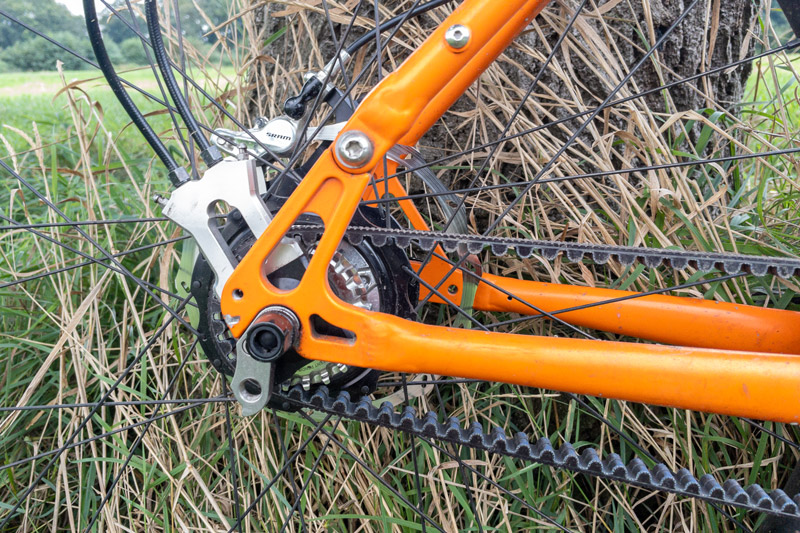
Both systems use planetary gears, but the Kindernay makers do not use pawls for power transmission, but straight-toothed clutches. This allows for smoother, more precise and faster shifting. In practice, this is quite noticeable, as I have already described above in the riding impression.
André Joffroy from the German Kindernay distribution trail.camp Distribution explains:
“The decisive factor is the greater flush frictional connection of the clutches in the Kindernay, which enables the high torque transmissions. The advantage over pawls: With the toothed disc/coupling, all teeth are engaged at the same time. This means that the frictional connection takes place over the entire surface.”
The Kindernay XIV comes with installation widths of 142mm, 148mm, 197mm x12mm and 135mm, 190mm x10mm.

Mineral oil instead of cable
Another difference to the Rohloff is the hydraulic control (mineral oil). This is done via the so-called HYSEQ, a closed system consisting of control box (actuator), cables and shift levers. The HYSEQ is available as a Twosie, i.e. with two shift levers on the right and left of the handlebar. Or as an Onesie, i.e. with a shift unit on one side of the handlebars that includes both levers. On the test bike I rode with Twosie, which was very intuitive and whose mode of operation I already know from electronic shifting.

The Rohloff normally comes with a twist grip. However, there are already many tuning solutions that also use handlebar shifters and even solutions for shifting with a drop bar, such as the Cinq Shift:R Road, which, however, look strange and take up space in front of the handlebar.
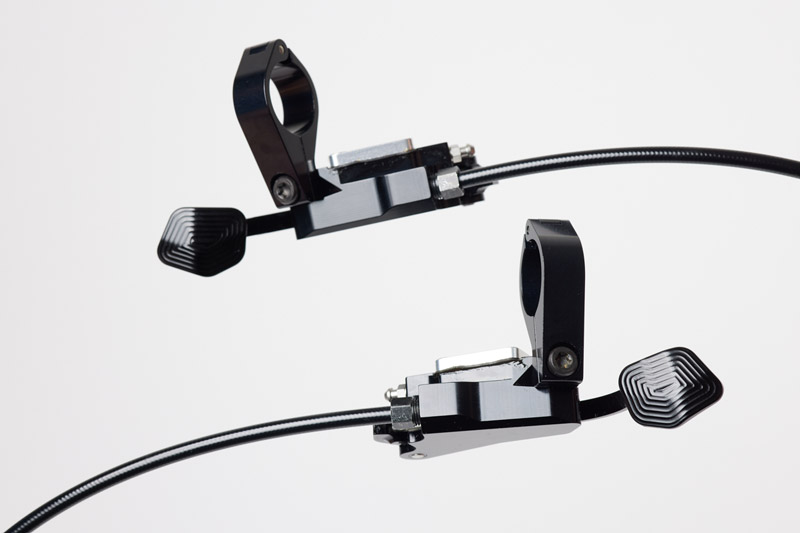
For the Kindernay, there are only the normal handlebar shifters so far. But drop bar riders don’t necessarily have to do without the Kindernay on the Allroad bike. They can use the new Surly Corner Bar, which is similar to a drop bar and allows the use of normal handlebar shifters. Or you can work with Paul clamps, with which the levers also fit on 31.8mm handlebars.
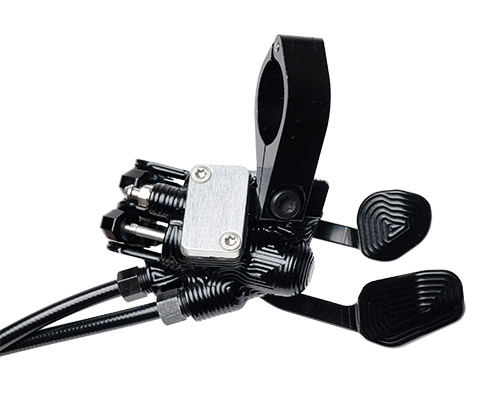
There is no electronic control and corresponding shift levers/buttons as with the Rohloff E-14 (yet).
Now some of you are starting to sweat, because hydraulics and bicycles are certainly a topic of discussion. Will it stay tight? Will the lines hold? Do I always have to take a bleeding kit with me?
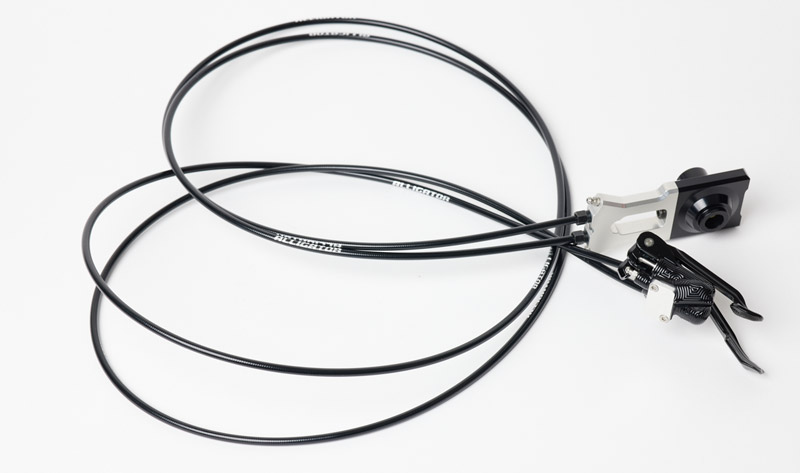
Yes, yes and no, rather not. It’s the same with disc brakes: hydraulics have now been tried and tested on bicycles and, from Kindernay’s point of view, are the optimal solution for shift control. It works in all shifting situations and also functions under extreme temperatures. Frozen cables should be a thing of the past, as well as large resistances due to tight bends. On the test bike, the cables are laid quite elegantly on the side, in my view. Of course, they are quite prominent there and susceptible to possible damage. However, I refer this concern to the corresponding discussions on hydraulic disc brakes, where this is no longer a real issue.
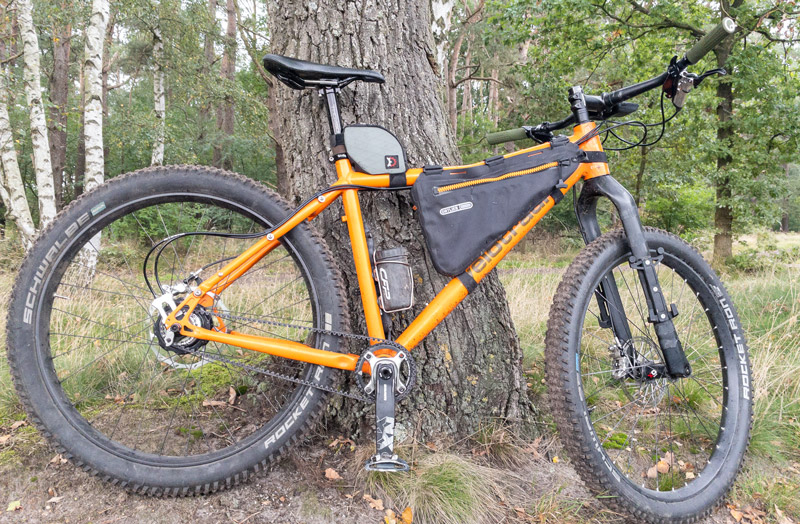
But what if there is a sudden loss of oil in the HYSEQ or the hub? If this should happen, the hub can still be shifted via the axle, but would have to be removed for this (because the HYSEQ unit has no more oil, or too little). Nevertheless, the hub can still be used in the respective gear. So you don’t come to a standstill.
As with the Rohloff, an oil change is recommended once a year: for the HYSQ and the XIV hub. If you notice a spongy behaviour when shifting, you have to readjust the pressure points, which, according to Kindernay, should be done in 10 minutes. The principle is similar to that of hydraulic disc brakes.
Hub: Switch it!
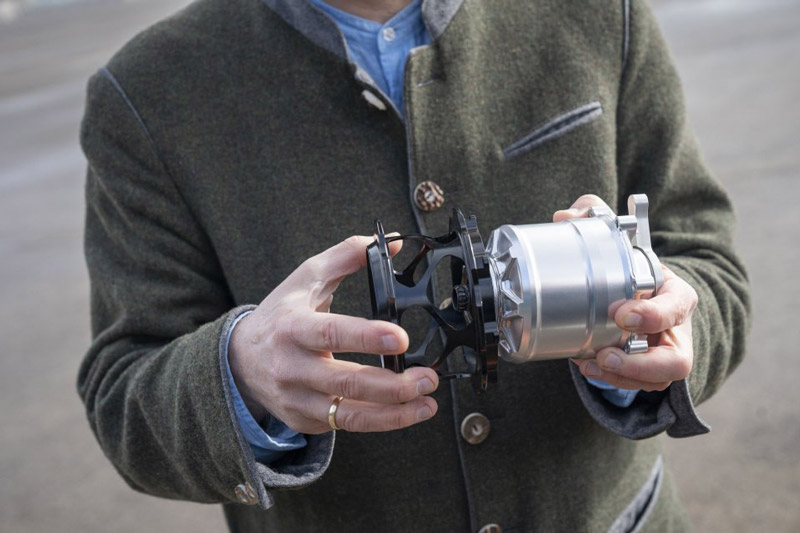
However, what distinguishes the Kindernay from the Rohloff is the so-called SWAP technology. In concrete terms: the hub can be taken from bike to bike relatively easily. This is realised by the so-called Kindernay Cages (cages with flange), into which the hub is inserted. These cages are available for 28, 32 and 36-hole rims.
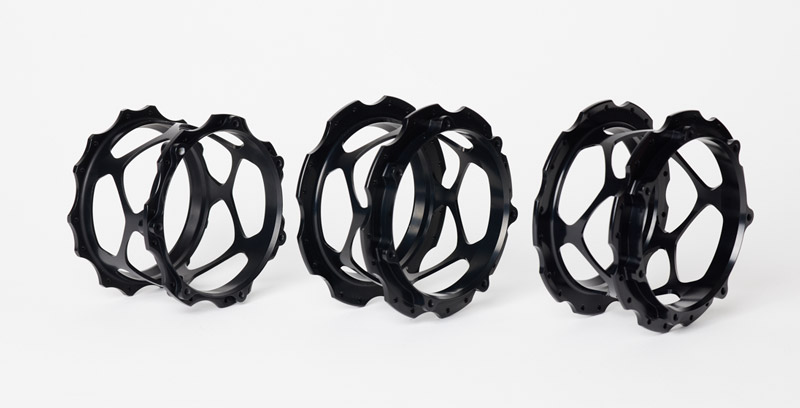
According to André Joffroy, the swap takes about 10 minutes:
“Axle out, wheel loosened, HYSEQ pulled off, wheel removed, 7 bolts loosened, gear removed. Then the conversion to other frame, or other wheel, reverse procedure.”
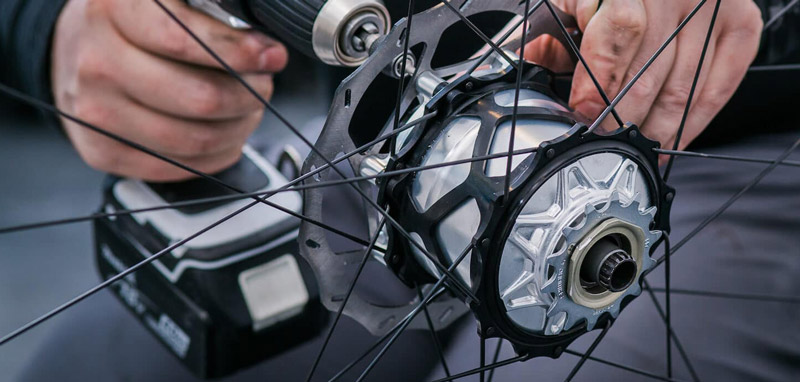
The HYSEQ can simply be removed for this. You can see that very well in the video here:
Another difference to the Rohloff are the brake discs: on the Kindernay XIV you have to use special Kindernay discs that fit the 7hole mount. These are available in the sizes 173mm, 193mm and 216mm.
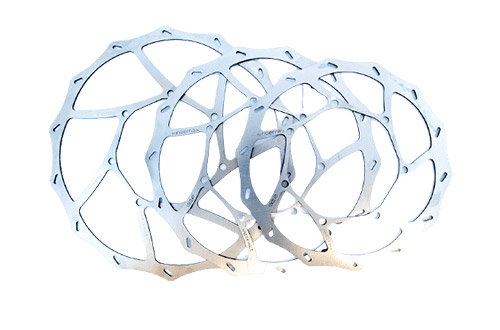
This is ok from my point of view, but restricts a bit. With the new Kindernay VII hub, the Norwegians already use the classic 6-hole mount and thus allow the use of third-party discs. Maybe this will also be possible with the XIV – but I can’t say whether this is possible due to the design.
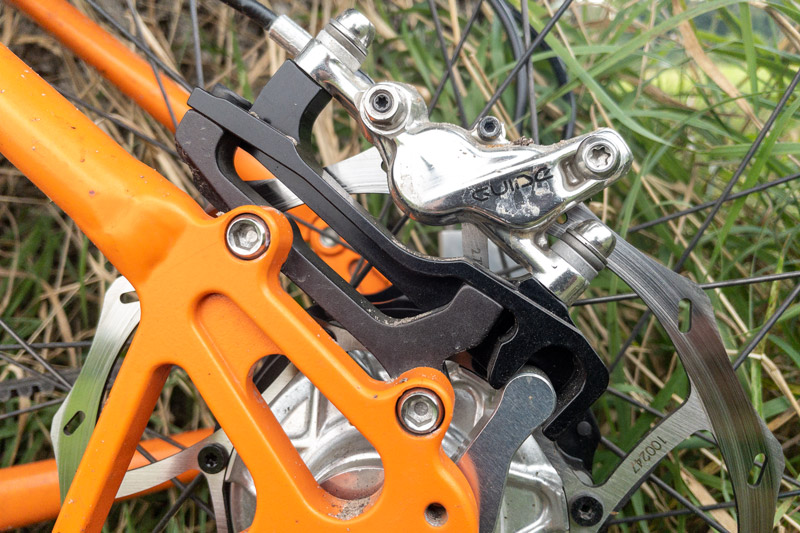
The brake body is mounted on the so-called Reaction Mount. This is included with the 14-speed Kindernay and FM, PM and IS brake bodies can be fitted using an adapter.
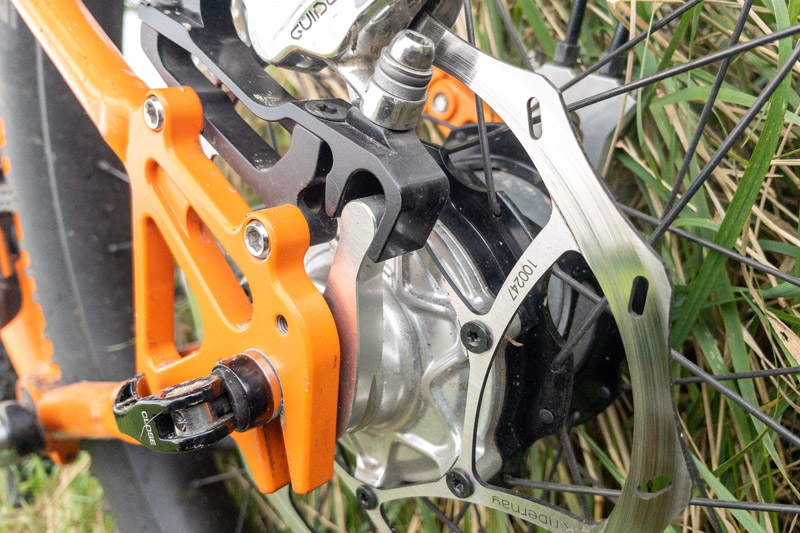
And for those who still ride with rim brakes/V-brakes: The Kindernay can also be ridden with these, but according to André Joffroy from trail.camp, this requires some adjustments:
“Instead of the brake disc, an intermediate ring should be used to ensure that the hub sits properly in the SWAP. In addition, a torque support must be realised. Here there will be further options from the 7-speed portfolio.”
Basically, however, the Kindernay hub is intended as a disc brake hub.
Kindernay: Lighter, but more expensive
Hub gears always have the disadvantage of weight. The Kindernay has been optimised in this respect and brings the XIV down to 1,400g. In addition, the shifter, cage and cables weigh another 550g. The new 7-speed Kindernay weighs 1,200g.
In comparison, the Rohloff CC weighs 1,700g, the CC EX 1,800g and the CC DB 1,825g. Without twist grip and cable.
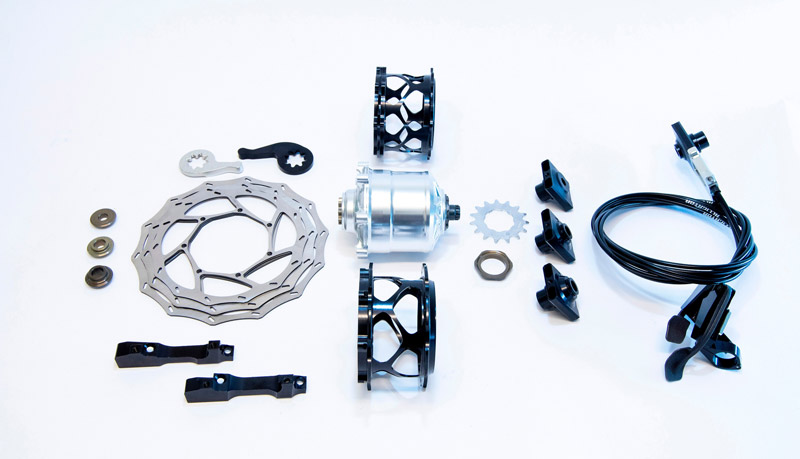
The Kindernay is also ahead in terms of price: 1,500 Euros are currently due for the XIV, including all components required for assembly. This includes the gearbox, SWAP cage, torque support, sprocket (16t) and HYSEQ and the brake disc.
The Rohloff is currently priced between 900 and 1,140 euros – depending on the type. However, there are additional costs for tuning parts like the Cinq shifters or the Rohbox.
Noise level
According to Kindernay, another point that should make a difference to the Rohloff is the noise level of the hub. This is supposed to run very quietly and not have the high noise in 7th gear (and sometimes higher) that is often noted with the Rohloff.
I can’t verify this at the moment because the hub I’m testing has yet to be run in. According to Kindernay, it needs about 500 km before the accompanying noises subside. At the moment, the hub is still audible and sounds like a louder 3-speed hub that works like a sewing machine when riding.
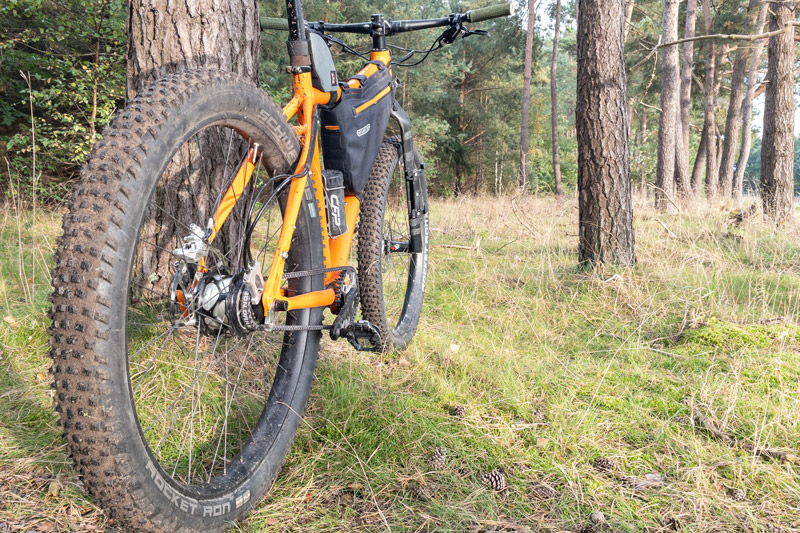
André Joffroy of trail.camp comments:
“The Kindernay hub is optimised for performance. It’s all about high torque, good power transmission and smooth running. This is at the expense of noise damping, which is why running noise remains.”
My Rohloff works almost silently, except for a slight “needling” and is only more audible when idling. I will also try to get a test bike where the Kindernay has been running for a while and where I can check the final noise level.
However, I assume that it will be similar to that of a run-in Rohloff.
Conclusion
The Kindernay XIV 14-speed hub is the high-end hub gear and is aimed at touring riders, (e-)MTB riders and adventure/bikepacking fans. With 543%, it has a wide gear ratio for all terrains, a very high torque, easy and performance-oriented shifting and a comparatively low weight.
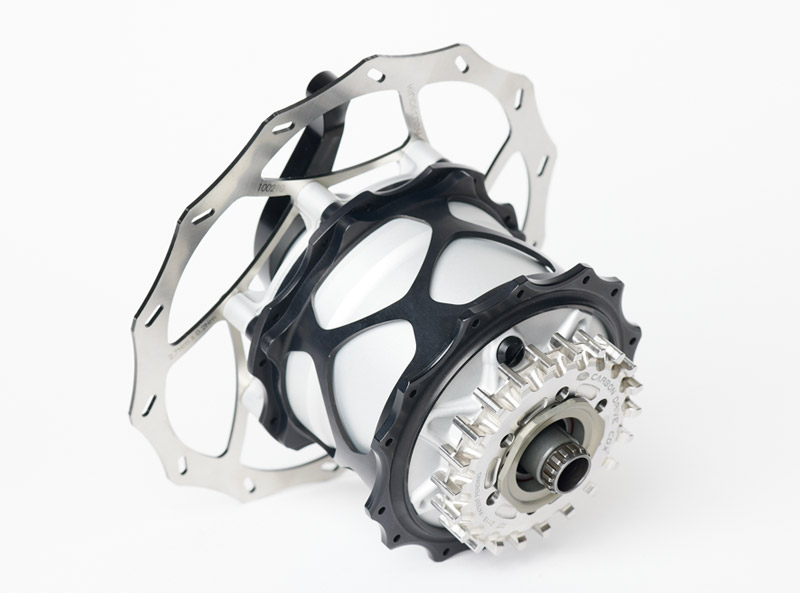
Kindernay likes to compare the XIV with a sports car gearstick, which you now ride on a bicycle. I can understand that, because the shifting performance is quite good thanks to the hydraulic shifters.
With its SWAP system, the hydraulic control, the real thru axle and the lower weight, the Kindernay XIV is definitely attractive for all those who no longer want to use derailleurs and do not want to do without shifting performance.
In terms of price, of course, it is an investment. Especially if you set up two systems, for example a wheelset with 700cc and 27.5 inches. Then you need the additional investment in a second set of HYSEQ, shifters, cage and brake discs. But then you can switch between the wheels as you like and use only one hub.
What became clear to me:
As a hub gear, the Kindernay is not a “Rohloff attempt”. Rather, it is a serious competitor with an impressive shifting performance that will meet with the interest of performance-oriented riders in particular.
This is welcome, as it brings some competition and hopefully some movement into the market, which may lead to further innovations and possibly also lower prices.
If you don’t trust hydraulics on your bike, or if you have doubts that they will hold up on longer tours through areas without infrastructure, you should continue to ride Rohloff. I am sure that soon there will also be touring cyclists and bikepackers who will be able to master extreme tours with the Kindernay.
The distribution in Germany is done by trail.camp Distribution. Here you can order directly and also have the corresponding wheels built. And in the case of service, there is also support here.

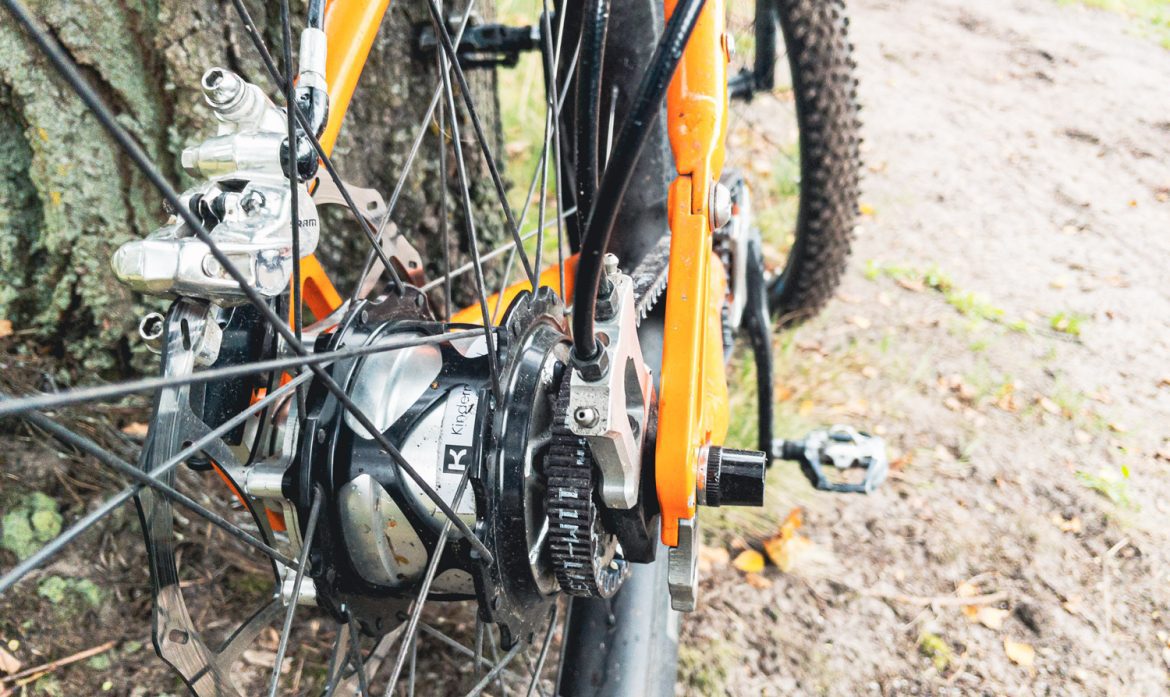
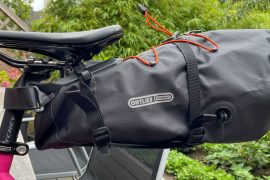
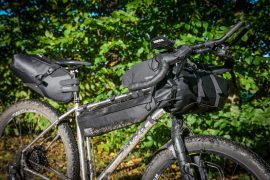
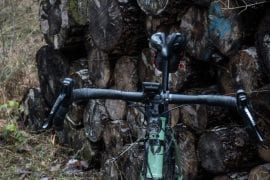

Danke für deinen Test! Über die Kindernay-Nabe findet man leider so wenig – bisher. Du hast ja auch das tflsberg von 8bar testgefahren. Könntest du dir dieses Rad mit der Nabe vorstellen? Es ist ja auch für flatbar geeignet. VG Gregor